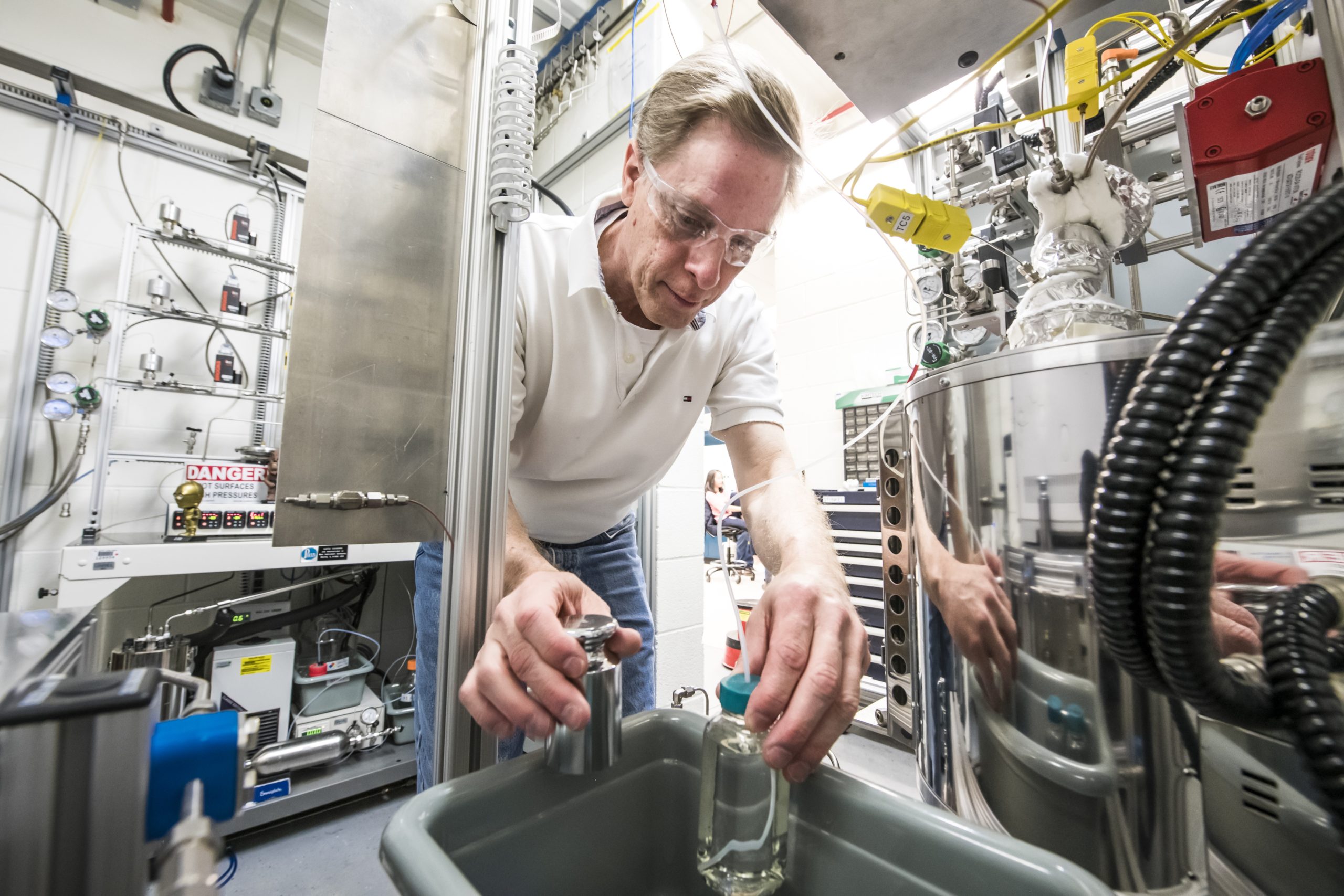Stay Up to Date
Submit your email address to receive the latest industry and Aerospace America news.
Researchers at a U.S. Energy Department laboratory in Colorado want to turn your table scraps into jet fuel.
Their early findings indicate that wet waste including food fragments and animal manure can indeed be converted into SAF, sustainable aviation fuel. Today’s SAFs are derived from sources including cooking and other oils and blended with conventional jet fuel. New sources are needed if the air transport industry is to meet its long-standing goal of reducing carbon emissions by at least 50% of 2005 levels by 2050.
“In the U.S. alone, we use well over 20 billion gallons per year in jet fuel, so there’s no way that just waste fats, oils and grease can cover that demand,” says Derek Vardon, senior researcher at the National Renewable Energy Laboratory based in Golden.
The researchers describe the refinement process for their SAF in a March issue of the journal Proceedings of the National Academy of Sciences. They begin by packing the waste into a sealed reactor tank devoid of oxygen. There, bacteria break down the waste, fermenting it into what Vardon describes as a “neat, stinky liquid” filled with volatile fatty acids. These VFAs are then poured through a stainless-steel tube packed with crushed zirconium oxide, which catalyzes a reaction that turns the VFAs into water and shorter strings of ketones, a class of carbon compound. The ketones then flow through another tube, this one filled with hydrogen gas and crushed platinum-loaded aluminum oxide. The hydrogen reacts with the oxygen in the ketones, the final products of which are water and hydrocarbons.
Last March, the Colorado researchers sent the first fuel samples to colleagues at the University of Dayton in Ohio for analysis. Among the series of tests, they chilled the fuel until it became solid to determine its freezing point, which can’t be above minus 40 degrees Celsius for Jet A, according to ASTM International, the standards organization based in Pennsylvania. Alternative fuels must be similar enough to traditional jet fuel that today’s aircraft engines would require no modification.
The researchers finalized the SAF formula in September and are now focusing on scaling up production. They want to produce at least 100 gallons (378.5 liters) of fuel, the minimum amount required to begin approving the SAF for commercial use under the Fast Track option offered by ASTM. Under this streamlined process established last year, certain SAFs could be cleared for blending up to 10% volume with traditional jet fuel in
one to two years, compared to the long-standing three- to
seven-year screening process for SAFs that are approved for
50/50 blends.
“Being able to make a fuel that can get qualified so quickly, not only is it great for getting into the marketplace, but it totally changes the commercialization plan you could have around making low-carbon-footprint, sustainable aviation fuel,” Vardon said.
In parallel, the researchers continue to refine a different variant of wet waste-derived SAF that could be blended with traditional jet fuel at higher percentages.
About cat hofacker
Cat helps guide our coverage and keeps production of the print magazine on schedule. She became associate editor in 2021 after two years as our staff reporter. Cat joined us in 2019 after covering the 2018 congressional midterm elections as an intern for USA Today.
Related Posts
Stay Up to Date
Submit your email address to receive the latest industry and Aerospace America news.




